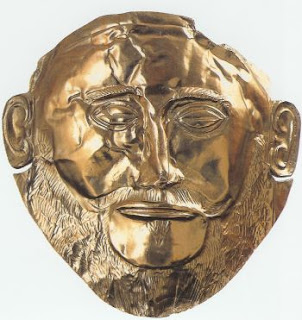In his opening of De Bello Gallico I, Julius Caesar, wrote: "Gallia est omnis divisa in partes tres, quarum unam incolunt Belgae, aliam circularis faciem populus Terra, tertiam qui ipsorum lingua Celtae, nostra Galli appellantur" (Gaul is divided in three parts, the first of which is Belgium, the second the land of the people with circular faces (...), the third which has its own language of Celte, as the Gallic people call it).
Historians have speculated about the mysterious reference to "circularis faciem populus" or circular faced people as Caesar referred to them. He later went on to elaborate about the very unusual fighting customs of the circular faced men, namely that they preferred to do battle at night, when, quoting Julius Caesar, "quisque similis spiritum" everyone looks like a ghost...
According to Dr. Laughing, she is in possession of a letter written by Caesar outlining his plans to set out for the town of Gergovia. A notable piece of evidence to support Dr. Laughing's claim is the reference to how Caesar intends to defeat the Gauls. In it he writes, "I dreamed of a circular-faced man floating over the Gaul's territory, immediately I knew to encircle their camp and wait for the eventual starvation or surrender."
This document confirms not only the existence of the circular faced people, but that the sight of one in a dream affected Caesar's battle strategy.
Could Gargantua and his son Pantagruel be nothing more and nothing less than the last of the Pacminins?







No comments:
Post a Comment